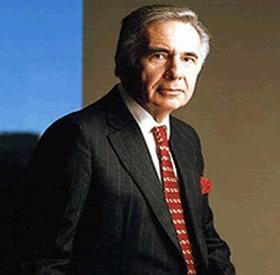Although the term ‘hedge fund’ used to refer to funds that used hedging-based strategies exclusively, the diverse range of strategies now employed by hedge funds have robbed the name of much of its original meaning. However, it remains more than a flag of convenience for high-end investment funds, and there are still several characteristics that are shared by the vast majority of hedge funds.
Perhaps the defining characteristic of a hedge fund is that they are set up to allow the fund managers the flexibility to pursue absolute return strategies. This means they are intended to provide profits for investors during bear markets as well as bull markets, so even if the market is tanking, hedge fund managers can find ways to make money out of it. This involves using a range of diverse trading strategies and financial instruments, many of which would not be available to a mutual fund manager due to stricter regulatory requirements.
The Hedge Fund Manager
The story of any hedge fund begins with the hedge fund manager, who sets up the fund, decides on the specific strategies or philosophies it will employ, as well as determining the legal structure and the entry requirements.
Once this has all been decided, it is then the fund manager’s job to seek out accredited (i.e. rich) investors to put their money into the fund. It is common for hedge fund managers to ‘put their money where their mouth is’ and invest a significant amount of their own money, often upwards of half a million dollars, in the fund at the outset. This helps to convince investors of the strength of the fund manager’s faith in the project, and aligns his interests with that of the investors.
Common Investment Strategies
There are lots of different strategies that can be employed by a hedge fund manager in order to make money for the investors in a fund. In fact, they are free to do just about anything, as long as it is within the law. That being said, there are a few strategies that tend to be used more than others, mainly because they chime with the objective of producing ‘absolute returns’ – here are the most common:
Directional or Tactical Strategies
The majority of hedge funds use strategies that could be described as being tactical or directional. One example of this was George Soros and Jim Rogers’ famous Quantum Fund, a “macro” (international) fund that made “top-down” bets on currencies, commodities, foreign economies, and interest rates. Macro funds like these look at the big picture for trade opportunities, rather than zoning in on individual companies.
Other directional or tactical strategies include long/short strategies that combine long positions with short sales, market neutral strategies that aim to negate the effect of market movements in order to isolate pure returns from individual stocks, and dedicated short strategies that specialise in short-selling over-valued securities.
Event-Driven Strategies

An event-driven strategy is one that take advantages of one-time events such as transaction announcements. There are several types of strategies that fit this description. One of these is distressed securities, which is the strategy of buying shares in companies that have been beaten down unfairly, or which are reorganizing. Often, this strategy is used by predatory ‘activist funds’, which take large positions in small, flawed companies and then use their shareholder leverage to force management changes or a restructuring process.
Another event-driven strategy is merger arbitrage, which involves buying stock in a company that is being bought out, and hedging that purchase by short-selling the stock of the company that is buying it.
Arbitrage Strategies (Relative Value)
Arbitrage, in its purest form, is a risk-free profit opportunity brought about by pricing inefficiencies. For example, if a particular share is trading at $20 currently, and a futures contract based on that stock – essentially a promise to buy or sell the stock at a certain price – is priced at $30, then you can simultaneously buy the stock and sell the futures contract. This gives you an automatic $10 gain, less borrowing and transaction costs.
Arbitrage opportunities are relatively rare and don’t usually provide huge returns, just a very low level of risk in exchange for the returns. As a result, there aren’t many funds that operate using this strategy alone, but those that do provide fairly reliable – if not huge – returns.
Responsibility to Investors
Although hedge funds are not subject to quite the same level of regulatory oversight as retail investments such as mutual funds, the hedge fund manager does still bear the responsibility of letting investors know how well the fund is performing and what it has been investing in. This information is presented in a variety of ways, including statistics, charts, and numbers, and delivered to investors in the form of regular reports.
In order to facilitate this reporting, hedge fund managers hire administration staff to keep track of all the documentation related to the fund, and present the relevant information to investors. This provides the hedge fund manager with the freedom to concentrate on running the fund’s investment activities, rather than getting bogged down with administrative tasks.
What do Hedge Fund Managers Get Out of It?
A quick glance through any list of the world’s richest people, such as the ubiquitous Forbes Rich List, will reveal that quite a number of these people are hedge fund managers. So how do they make their money? Well, they do so in a few different ways. Even if the fund performs badly, they will still collect a management fee, typically between 1% and 2% of the assets under management, but sometimes more.
While this management fee will usually be fairly hefty in itself, it usually pales in comparison with the performance fee, which is a percentage of the profits made by the fund in that year. This is commonly around the 20% mark, but some of the bigger-name hedge fund managers can charge as much as 40% or even more, with the justification that they are making more money for investors than managers that charge less.
Finally, they make money via their own investment in the fund. This can range from a token gesture to show their faith in the fund and the strategies it employs to a substantial chunk of the total capital invested in the fund.
Closing Down Hedge Funds
Hedge funds can be closed down for a number of reasons. It could be that the strategy is no longer as profitable as it once was, that the fund manager wishes to retire, or the amount of capital invested in the fund has dropped to unsustainable levels.
When the time comes to wind down a largely successful hedge fund, the assets are distributed among the investors proportional to their share of the equity in the fund, or may be transferred over into a new hedge fund that has been started by the same company.
However, when the fund does not perform well, things are less straightforward. When this happens, the assets that are left are distributed to investors, although managers will try to avoid a big rush from investors at a time of low liquidity. To this end, fund managers might freeze investor redemptions before announcing the winding down of the fund, and only make funds available when market conditions improve.
Shutting down a hedge fund due to poor performance is very much considered a last resort. A failed fund can be the end of a fund manager’s career, as nobody wants to be associated with a failed fund, and investors will be reluctant to invest with someone who has lost money for investors in the past.
Read More:
I am a writer based in London, specialising in finance, trading, investment, and forex. Aside from the articles and content I write for IntelligentHQ, I also write for euroinvestor.com, and I have also written educational trading and investment guides for various websites including tradingquarter.com. Before specialising in finance, I worked as a writer for various digital marketing firms, specialising in online SEO-friendly content. I grew up in Aberdeen, Scotland, and I have an MA in English Literature from the University of Glasgow and I am a lead musician in a band. You can find me on twitter @pmilne100.





































